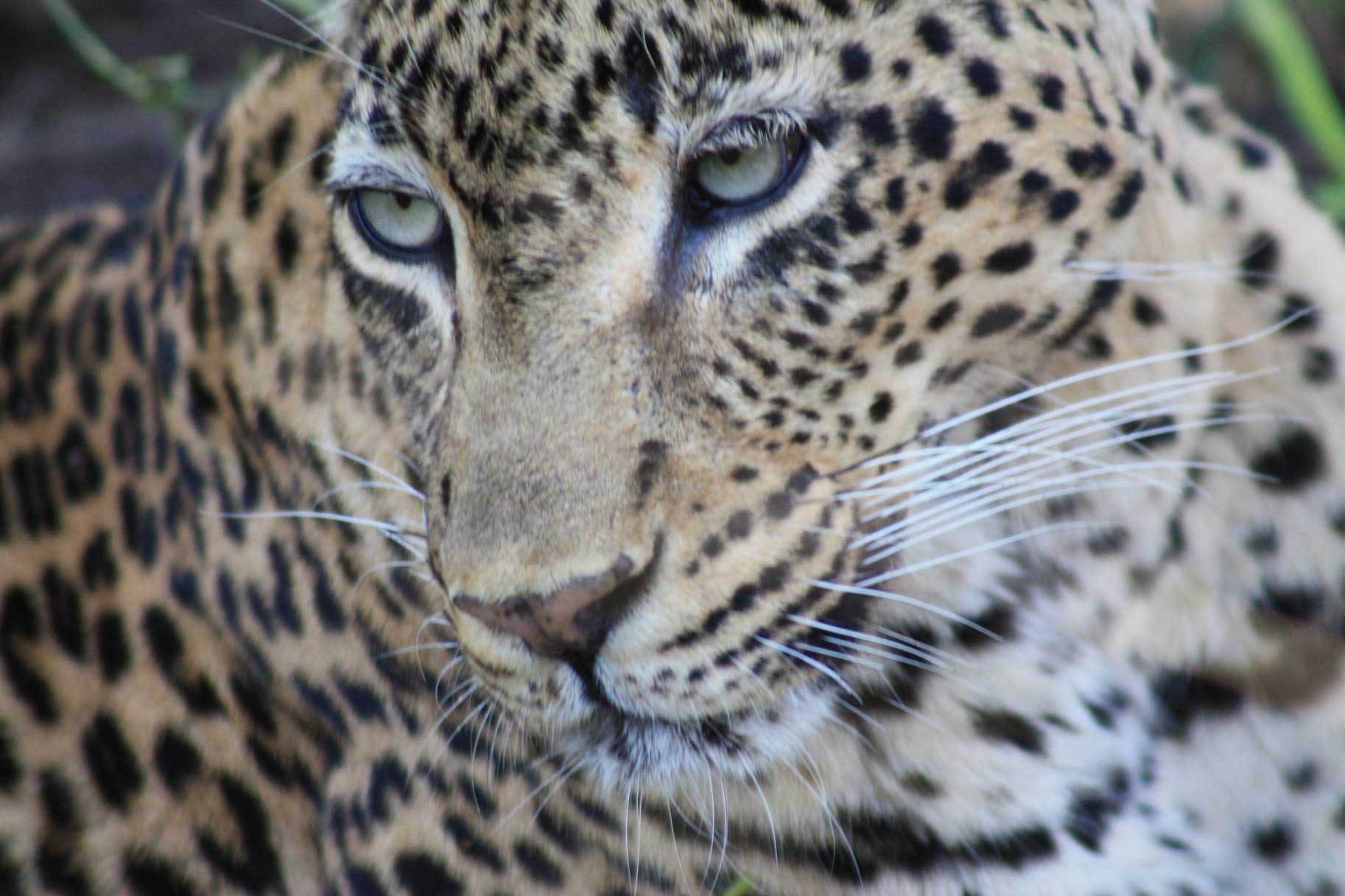Of all the Big Cats of Africa including the African Lion, (Panthera leo) and African Cheetah, (Acinonyx jubatus), the African Leopard (Panthera pardus) is considered to be the most elusive and secretive, but also the most seductive as I witnessed while on safari in the Mala Mala Camp within the National Kruger Park in South Africa and the Mashatu Game Reserve in Botswana, Africa. Whether peering through the jungle foliage, and blending into the thick camouflage, or silently slinking through the savannah with impeccable grace and poise, the African Leopard is distinctively different in body, character, and behavior by comparison to the stately Lion, or wiry Cheetah.
As one of the “Big Five,” the African Leopard, along with the African Lion, African Elephant, African Buffalo, and Rhinoceros, is regrettably one of the most sought after targets of sport hunters and trophy hunting which is barbaric in this day and age, but regrettably brings large revenues to countries like Zimbabwe. It is also destroying the heritage and unique biodiversity of the African continent.
More activism and conservation awareness is essential to stop these primitive, greed-driven practices.
According to CITES – the Convention on International Trade in Endangered Species – ‘the African Leopard is threatened with extinction and is or may be affected by trade.’ The IUCN – International Union for Conservation of Nature – states ‘they may soon qualify for Vulnerable Status due to habitat loss and fragmentation; they are becoming increasingly rare outside of protected areas, and the population is decreasing.’
Worldwide African Leopard skins and body parts regrettably are pursued by poachers, profiteers and illegal hunters. Lawmakers and conservation organizations continue to fight for the Big Cats and other endangered species globally. Join in to take a stand now for wildlife in Africa and all the other continents.
____________________________________________________________________
FAVORITE PHOTOGRAPH — South Africa 461.JPG, bold portrait of African Leopard, is my favorite photograph as it exemplifies that close encounter contact with wildlife in their natural habitat. The serene facial expression, the compact physical beauty, and the cool emotion emitting as to what this African Leopard is thinking and feeling as it observes the naturalist/photographer, never ceases to enter my mind. Experiencing and capturing this fleeting moment in wild habitats is my special relationship with earth, its vast but beleaguered wild domains, and our continuing mission to protect and perpetuate the extraordinary, endangered animal species who inherit what I call our Edens of Earth.
Ⓒ Suzanne Vlamis Photography

